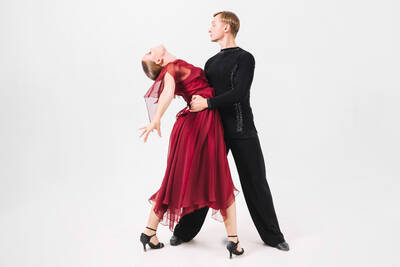The 2,500-tonne structure of the old Kaohsiung Station began its journey home on July 26. According to the plan, it will be moved 62.66m in two months. On the first day of the process, it was moved 70cm north without a hitch. It is expected to reach the central axis of the new Kaohsiung Station by Sept. 26.
The old Kaohsiung Station, built in 1941 during the Japanese colonial period as part of the great Kaohsiung urban plan, was then called the New Kaohsiung Station. The style of the station’s main structure is an example of Japanese-Western style architecture. The design of the four-cornered roof with a spire, imitating a Tang Dynasty building, makes it look like a big hat from a distance, which gave rise to its nickname the “imperial-crown-style station.” In 2003, it was designated by the Kaohsiung City Government Bureau of Cultural Affairs as a historic building.
To facilitate Kaohsiung’s underground railway project, a 17-day project to relocate the “imperial-crown-style station” started on Aug. 16, 2002, setting a record for the largest relocation of cultural relics in Taiwan. The old station was repurposed as the Kaohsiung Underground Railway iCenter, housing exhibitions that record the station’s history.

Photo courtesy of Kaohsiung City Government 照片:高雄市政府提供
Now that Kaohsiung’s new station area is nearly completed, the Railway Bureau and the Kaohsiung City Government are relocating the station building once again — back it to where it was 18 years ago.
(Translated by Lin Lee-kai, Taipei Times)
重達兩千五百噸的舊高雄車站七月二十六日開始「回家」,預計花兩個月時間移動六十二點六六公尺,第一天順利往北移動了七十公分,整個挪移作業預計九月二十六日前、要到達高雄新站中軸線定位。

Photo courtesy of Kaohsiung Deputy Mayor Charles Lin 照片:高雄市副市長林欽榮提供
建於一九四一年的舊高雄車站,日治時期稱新高雄驛,為當時配合大高雄都市計畫所新建的鐵道車站。其主體採和洋式建築,屋頂上方設計仿唐朝建築的四角攢尖頂,遠望像頂大帽子,被暱稱「帝冠式」車站,二○○三年由高市文化局指定為歷史建築。
因應鐵路地下化工程,帝冠式車站於二○○二年八月十六日展開為期十七天的挪移工程,創下全台最大文物搬遷紀錄。老車站改為「高雄願景館」,做為紀錄車站歷史、展覽之用。
如今高雄新站區即將完工,鐵道局和高雄市政府再次遷移車站建築,讓它回到十八年前的位置。
(自由時報記者王榮祥)

For many people in Taiwan, childhood memories of rural life include pig pens standing beside family homes. Leftover rice, vegetable scraps and soup from daily meals were poured into buckets and fed to pigs. This practice of feeding pigs with household food waste was once a common way of life, both an economic choice and an expression of agricultural society’s deep respect for conserving resources. From a practical standpoint, pigs are omnivorous animals capable of efficiently digesting food scraps that humans can no longer eat. For rural households, food waste cost almost nothing, yet it could be converted into pork, a

Tango unfolds in a dimly lit room, where a haunting melody ushers two dancers into a close embrace. Here, music and movement merge into a silent yet passionate conversation, expressing longing, memory and shared purpose. What makes tango truly magical is the deep interaction and spontaneous improvisation between partners. Tango began in the late 19th century in Buenos Aires, Argentina’s bustling capital. Born in the poor working-class neighborhoods and busy port areas, this dance emerged from a melting pot of cultures. European immigrants, African slaves and local residents all contributed to its unique character. From these rich influences, tango

A: What show are you watching online? B: I’m watching “Fly Me to the Moon & Back” – an exhibition launched by the Taipei Music Center (TMC) to commemorate the late singer Tom Chang. A: Known for his sky-high notes, Chang is praised as one of the best singers in the 1990s. His death at the age of 31 was a major loss indeed. B: And I’m so glad that we went to the TMC’s 90s-themed concert last Friday. I finally saw the iconic “Godmother of Rock” WaWa perform live. A: This year-end show also featured singers Princess Ai, Bii, Wayne Huang, PoLin and

A: Apart from the Taipei Music Center’s exhibit and concert, US pop rock band OneRepublic and rapper Doja Cat are touring Kaohsiung this weekend. B: OneRepublic is so popular that after tonight’s show at the K-Arena, they are set to return to Taiwan again in March next year. A: And Doja will also perform at the same venue on Sunday, right? B: Yup. Her collab with Blackpink’s Lisa and singer Raye for the song “Born Again” has been a huge worldwide success. A: Doja even made it on Time magazine’s “100 Most Influential People” list in 2023. She’s so cool. A: 本週末除了北流的特展和演唱會外,美國男團共和世代和饒舌歌手蜜桃貓朵佳也將來台開唱。 B: 共和世代因太受歡迎,繼今晚高雄巨蛋的演唱會後,預計明年3月即將再度來台巡演唷。 A: 朵佳本週日將在同場地開唱,對不對?